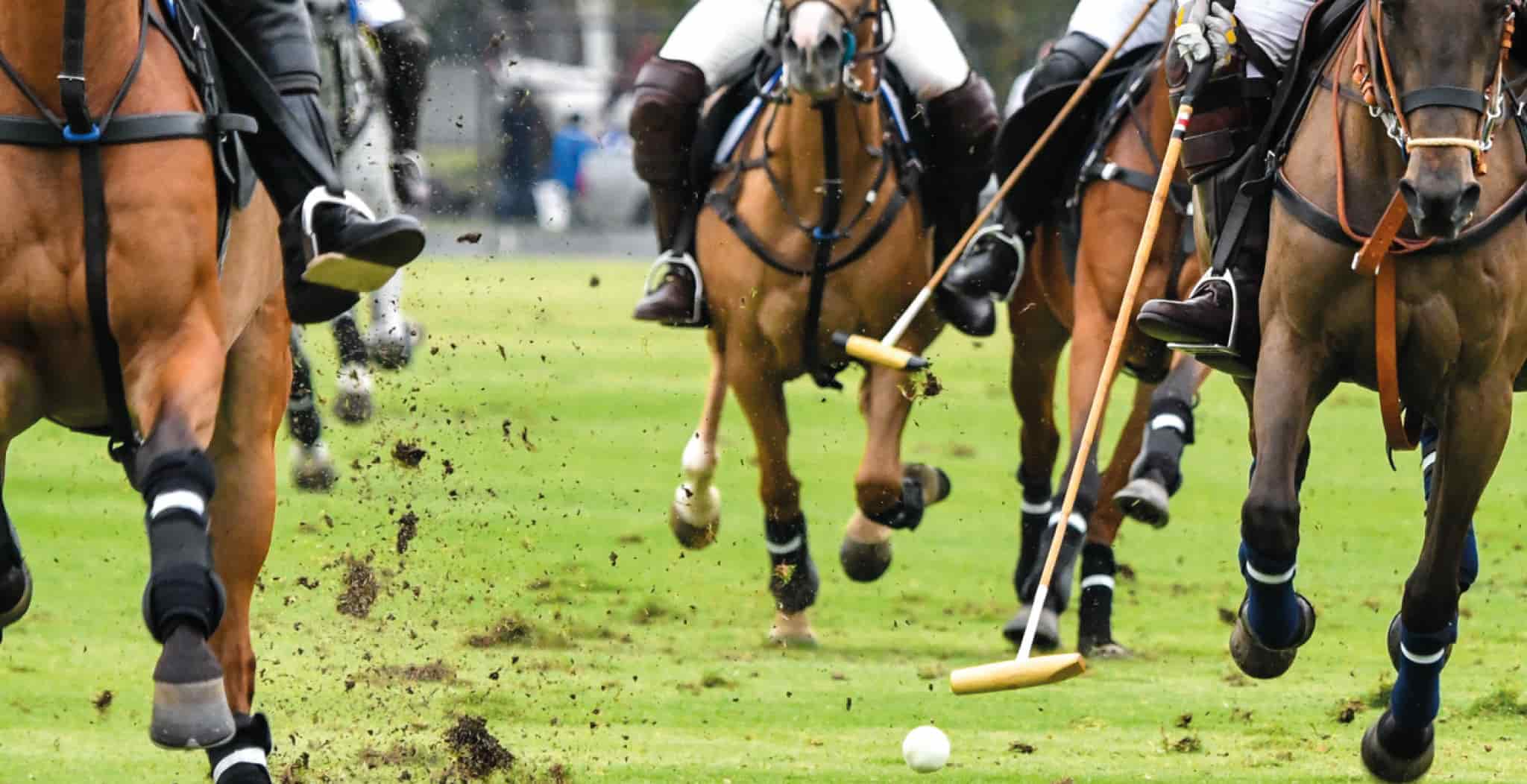Polo is the first ever recorded equestrian sport. Originating from the need to train and ride horses into battle the sport has evolved into globally recognised sport.
Horses who compete in the fast-paced game of polo are actually known as “ponies”, even though the majority of them are actually full sized horses. This is in fact a reference to their level of agility rather than their size.
The sport requires the ponies to move at extremely fast speeds, turn and stop all whilst saddling a rider.
Many breeds take part in the game at amateur levels but as the standard of competition increases a few common breeds become more commonly used.
The four main horse breeds used in the sport are Thoroughbreds, Argentinian Polo ponies, the “original polo breed” the Manipuri and Quarter horse crosses. One common trait amongst these four breeds is their natural ability to be fast and agile mainly due to their strong hindquarters - important for any horse competing in polo.
The four most common breeds used in the game of Polo:
Thoroughbred Polo Ponies
Thoroughbred horses are widely used across many equine disciplines due to their excellent athletic ability and ability to learn.
The breed have delicate heads, broad chests, athletic physiques with short backs and leg bones allowing for long and steady strides. Thoroughbreds average at 16 hands (163cm) and weigh around 450 kilos at full maturity, often fashioning chestnut, bay, gray, brown or black hair.
Thoroughbreds have proven to show extremely high levels of stamina and due to being strong and remarkably agile the breed is ideal for taking part in polo.

Argentinian Polo Ponies
The Argentinian Polo pony is a cross between a Thoroughbred and an Argentinian ‘Criollo’ which originally were working horses valued for their equally impressive athletic ability and strength. When the two were bred together the outcome was a strong and agile breed with great endurance and recovery abilities.
Although not an official breed, Argentinian Polo Ponies are widely recognised across the world for their fine attributes to polo and a hard working committed sports horse. Standing on average about 14 to 15 hands they are slightly smaller than Thoroughbreds.

Manipuri Polo Ponies
Manipuri Ponies originate from India and were initially bred and trained as war horses and were prestigious members of the cavalry. It is widely said to be ‘the original polo horse’ and continues to be used across the world to compete in polo.
A small breed, Manipuri Ponies typically range from 11 hands to 13 hands and riders often require a shorted mallet.
Quarter Horse Cross Ponies (Appendix Ponies)
The offspring of a Quarter horse and a Thoroughbred is known as an Appendix horse. Thes breeds combine the endurance level and fast-paced speed of a thoroughbred with the strength and power of a quarter horse.
Commonly used as working ranch horses and widely used in many rodeo based disciplines such as Barrel Racing and Roping, quarter horses have become a popular breed within polo.

Common injuries in Polo Ponies and common treatments
Similar to other sport horse disciplines Polo requires the animal to have a variety of athletic abilities, not only for their performance level but also to maintain their wellbeing and safety.
On average a polo horse will run a combined distance of one mile during a chukka, which comparing to other disciplines would categorise them as a middle-distance horse and not a sprinter.
The sport however contains non-stop movement at high speeds with turns and sudden stops putting extensive strain on the ponies tendons and ligaments, thus increasing the chances of an injury.
Many players will look to minimise their risk of suffering an injury by providing an ongoing wellbeing program for their polo ponies both pre and post competing.
With splints, tendons and ligament injuries commonly experienced within polo many look to support their ponies legs directly after competing by reducing the temperature of the tendons with cold-hosing, bandaging or other clays and coolants.

Many owners will provide a carefully planned and well balanced diet for their polo ponies with ongoing joint care programs using a variety of supplements and complementary devices such as EQU StreamZ Horse Bands. The strain and pressure exhorted on a polo ponies joints can lead to further arthritic issues moving forward so managing the horses joints is important for a happy retirement.
Alongside various supporting tack, many polo ponies are regularly treated by therapists whether for massage, physiotherapy, Pulse-therapy (PEMF) and so on.
As well as issues to the animals legs some polo ponies will experience back and neck issues, often due to the nature of balancing the rider on the saddle. Kissing Spine can be a condition found in retired polo horses, indicating the strains their backs go through within the sport.
Owners will commonly include an ongoing 'wellbeing program' to include the support of the ponies back and neck. It is also important to the welfare of the ponies back and neck to ensure you have a properly fitted saddle.
The best tack on the market to support your polo ponies
It is vital to support your ponies legs with polo balls flying around from all angles.
Bandaging the horses legs or providing leg protection for a game is important but this needs to be done correctly and using appropriate tack, incorrectly done this can create long term complications. There are many bandages on the market with favourites such as Weaver Polo Wraps or the Woof Wear Vision fleece wraps.
Advanced Magnetism, widely adopted within other equine disciplines, is set to make waves within the polo community. This revolutionary and complementary approach to ongoing joint care provides a long term solution which can be used both pre and post exercise without the worry about increasing heat within the horses tendons or ligaments. Endorsed by many top riders across the world EQU Streamz Horse Bands offer a great ongoing tool for polo ponies.


